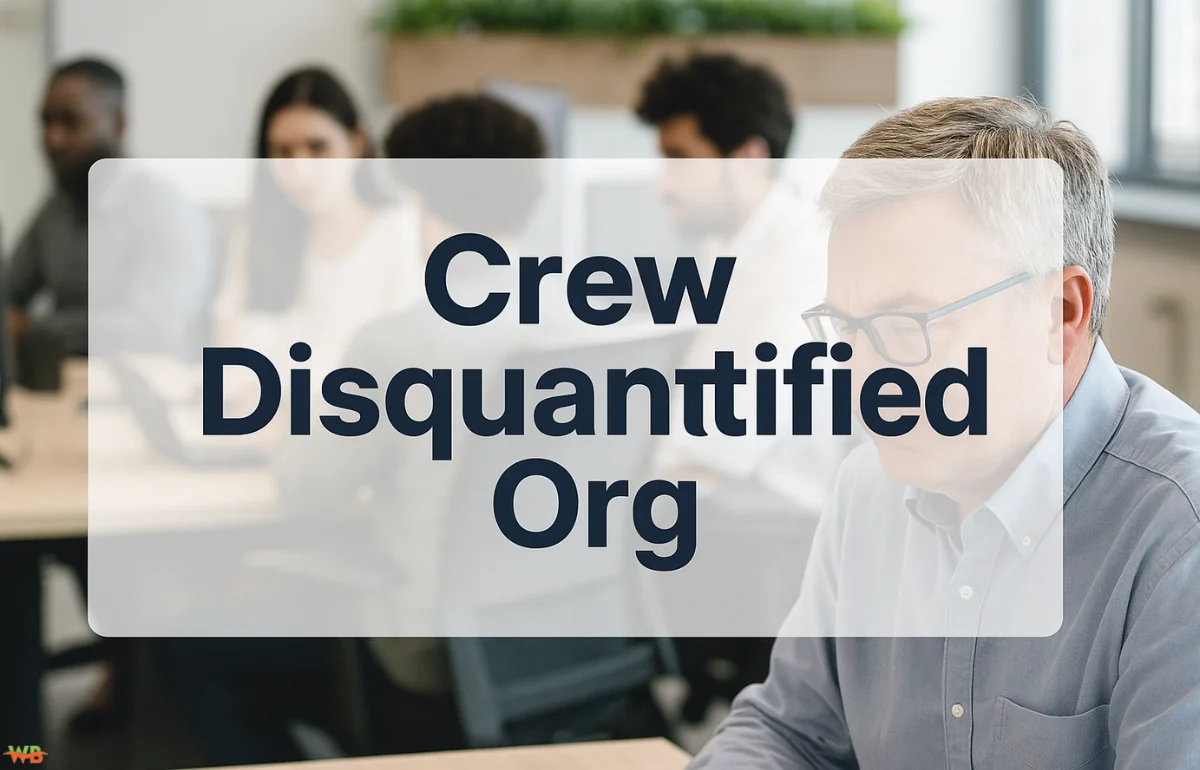In today’s hyper-automated, metric-driven corporate landscape, a new kind of organizational dysfunction has emerged — the Crew Disquantified Org. At first glance, the term may seem like business jargon, but its meaning hits close to home for many modern workers. A “Crew Disquantified Org” is a workplace where employees feel undervalued, dehumanized, and viewed as expendable components in a machine obsessed with metrics and productivity at any cost.
This article unpacks the causes behind this troubling trend, explores its long-term consequences, and — most importantly — outlines how organizations can shift course and build people-first workplaces that fuel creativity, engagement, and long-term growth.
What is a Crew Disquantified Org?
A Crew Disquantified Org refers to a company or institution that prioritizes data, performance analytics, and measurable outputs over the human elements of work — creativity, emotional intelligence, team dynamics, and growth potential.
Rather than being recognized for their unique contributions, employees in such environments often feel like interchangeable “cogs” in the machine. This culture is driven by excessive monitoring, rigid KPIs (Key Performance Indicators), and algorithmic oversight, making it hard for people to feel seen, heard, or valued.
Why This Trend is Gaining Traction
Several powerful forces are accelerating the rise of Crew Disquantified Orgs in today’s corporate world:
1. The Rise of Algorithmic Management
Companies increasingly use AI tools to oversee employee productivity. While automation has its benefits, it can easily shift from helpful to harmful when workers are subjected to constant surveillance and performance scoring, with little room for nuance or human feedback.
2. Over-Reliance on Quantifiable Metrics
When performance is measured solely by output, efficiency, and response times, things like innovation, mentorship, and collaboration fall by the wayside. It’s easy to measure how many emails someone answers — much harder to measure how well they support team morale.
3. Authoritarian Management Styles
Top-down leadership remains deeply embedded in many industries. Leaders who don’t seek input, encourage feedback, or adapt to individual working styles contribute heavily to employee disengagement.
4. Gig Economy and Labor Casualization
As contract work and freelance gigs become the norm, many workers feel treated as disposable — a trend worsened by the lack of training, mentorship, or long-term career pathways.
5. Short-Term Profit Pressures
Publicly traded companies, in particular, often make decisions with quarterly earnings in mind. This short-termism discourages long-term investment in human capital — the very thing that drives resilience and innovation.
Key Characteristics of a Crew Disquantified Org
Here’s a simple table summarizing how to recognize the signs:
| Characteristic | Description |
|---|---|
| Over-Metricized Evaluation | Performance judged by narrow KPIs, often ignoring qualitative contributions |
| Little to No Recognition | Lack of personalized feedback or appreciation for effort |
| Stagnant Career Development | Few growth opportunities or unclear career pathways |
| Micromanagement and Surveillance | Constant monitoring through software or algorithmic tools |
| Low Employee Input in Decision-Making | Employees feel powerless to influence decisions or challenge leadership |
| High Turnover and Burnout | Frequent resignations and elevated stress levels among staff |
The Human Cost: Why It Matters
Operating as a Crew Disquantified Org may look efficient on paper, but the long-term fallout is significant.
Decreased Employee Engagement
Gallup’s State of the Global Workplace (2023) found that only 23% of workers feel engaged at work — a stat directly linked to feeling unseen or undervalued.
Higher Turnover and Recruitment Costs
A disengaged workforce leads to high attrition. According to SHRM, the average cost per hire is over $4,700 — not to mention the productivity lost during onboarding and ramp-up time.
Innovation Drain
Fear-driven, overly watched teams rarely take creative risks. Companies that fail to support psychological safety miss out on breakthrough ideas and novel solutions.
Damaged Brand Reputation
In the age of Glassdoor, LinkedIn, and TikTok career exposés, poor workplace culture can quickly become public, deterring top talent.
How to Move Away from the Crew Disquantified Org Model
Shifting to a more people-centered organization isn’t just feel-good HR fluff — it’s smart business. Leaders can accomplish this in the following ways:
1. Redefine Performance Metrics
Stop relying solely on easy-to-measure outputs. Build evaluation models that include peer feedback, creative contributions, and emotional intelligence. Use 360-degree reviews to provide holistic insight.
2. Rehumanize Management
Encourage participatory leadership. Invite employee input, hold listening sessions, and make feedback part of company culture. Managers should be coaches, not overseers.
3. Invest in Career Growth
Offer upskilling, mentorship, and internal mobility programs. According to LinkedIn’s 2024 Workplace Learning Report, 94% of employees said they’d stay at a company longer if it invested in their development.
4. Balance Technology with Trust
Use AI and analytics to support — not police — your workforce. Be transparent about data usage, and never let automation replace real human conversations.
5. Recognize and Appreciate
Simple, consistent recognition goes a long way. Acknowledge not just the outcomes, but the effort, resilience, and care behind the scenes.
A Human-Centric Future is a Competitive Advantage
The companies that rise above the Crew Disquantified Org trap will be the ones who understand this: people aren’t just resources — they’re the drivers of innovation, culture, and growth. By building organizations that value both metrics and meaning, we can create workplaces where employees thrive — and businesses flourish.
FAQs: Crew Disquantified Org
[rank_math_rich_snippet id=”s-d5dd39e7-ffe9-4479-a39a-41c057119834″]
Final Thoughts: Put the People Back in the Process
The Crew Disquantified Org may be a product of our data-driven era, but it doesn’t have to define the future of work. By shifting focus from surveillance to support, metrics to meaning, and fear to trust, leaders can create spaces where people bring their full selves to the job — and where companies reap the rewards of real engagement.
Call to action:
If you’re a leader, it’s time to take stock of your culture. Are you empowering your crew, or disqualifying their potential? Start with a single change: ask your team what they need to feel valued. Then listen. It is critical to your organization’s future.
Citations:
-
Gallup. (2023). State of the Global Workplace Report
-
SHRM. (2022). The Cost of Hiring and Turnover
-
LinkedIn Learning. (2024). Workplace Learning Report – https://learning.linkedin.com/resources/workplace-learning-report

Ton Roobprom is an experienced writer focused on practical advice across technology, business, travel, beauty, lifestyle, and home improvements. He specializes in distilling complex subjects into clear, actionable insights to help you enhance your daily life.


